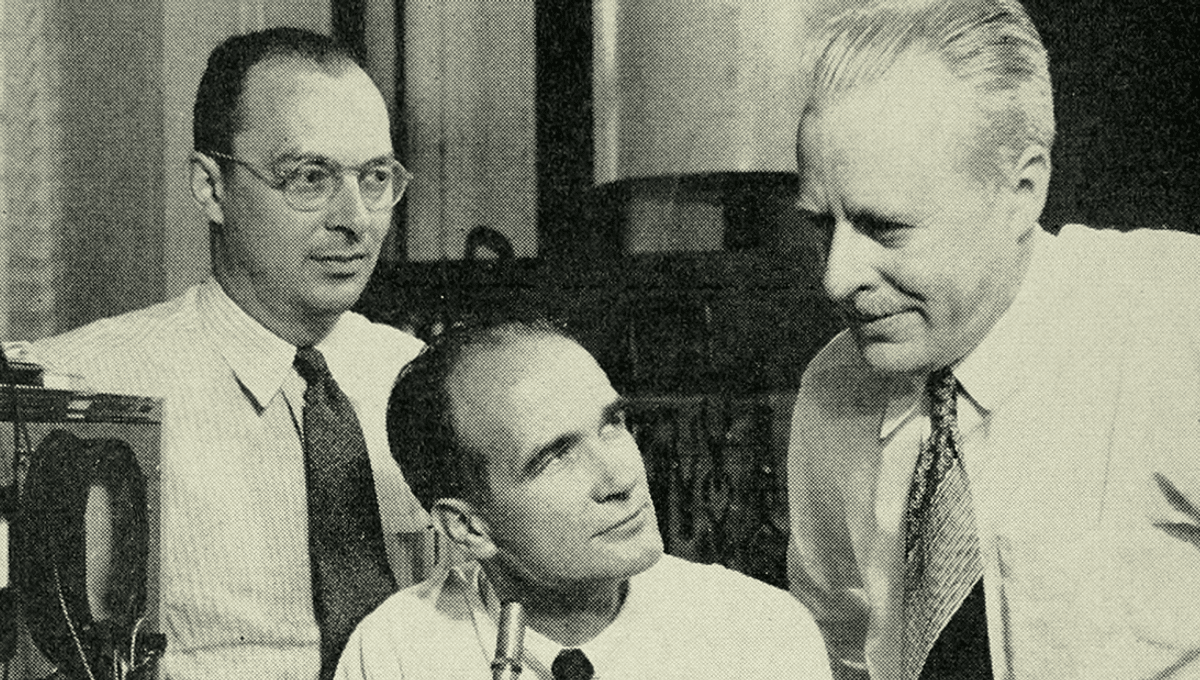
In 1980, an optometrist who invented shatterproof lenses for glasses took the next obvious step in his career and began trying to harvest the jizz of Nobel Prize-winning scientists.
Robert Klark Graham earned his optometrist career, but his real passion lay in collecting semen. The idea, which he turned into the “Repository for Germinal Choice”, was to collect the sperm of Nobel Prize winners and other geniuses, which could then be used by the public to produce “super-kids“. Though the bank produced 215 babies before it closed in 1999 following Graham’s death, the project didn’t quite go to plan.
If all the above sounds a little in the realms of eugenics, we’re not going to help things by pointing out that all of the donors were white. Graham was a eugenicist, who believed that “weak” people, who he termed “retrograde humans”, were no longer killed off before they could reproduce. Of course, as is overwhelmingly the case with eugenicists, there was a large racist element to his solution for this imagined problem. He believed that the best course of action was to conduct “intelligent selection”, and get intelligent white men to have more children. As well as all the donors being white, recipients of the sperm all had to be married, heterosexual, and white too.
Getting your hands on genius sperm, it turns out, is quite difficult, and even more so when you have a reputation for saying a lot of quite sinister stuff about the degradation of the species. Graham was able to attract three Nobel Prize winners to make donations to the bank. However, two of them backed out when Graham went to the press with the idea, and a backlash came quickly against the eugenic nature of it.
The third Nobel Prize-winner did not pull out, but likely only because his views were in step with the racist overtones of the whole project. William Shockley, who won his prize for his work creating the transistor, held a number of racist and bigoted views, including that Black people are intellectually inferior to white people, and that the “genetically disadvantaged” should be offered financial incentives through the welfare state to be sterilized. He continued to donate to the bank, only stopping because he believed he was too old to provide healthy samples.
Despite the controversy, the sperm bank continued, collecting sperm from other “geniuses” and eventually athletes, and babies were born from the donations. David Plotz, a writer and co-founder of Atlas Obscura, tracked down many of the children produced by the project.
“To answer the obvious question: no, they are not all geniuses,” he wrote in The Guardian in 2004. “Some are dazzling. Sam, 14, breezes his way through college maths and is a brilliant athlete. Joy gains straight As, dances the lead in the Nutcracker and plays two difficult instruments. But the kids are spread in a bell curve, slid a bit to the right of average. Some are brilliant. Most are very good students. And some are quite mediocre.”
One, a gifted child called Doron Blake, became a sort of poster boy for the sperm bank. Born to Californian psychologist Dr Afton Blake, and a donor known only as “red 28”, he ended up with a 180 IQ and a flare for reading at a young age. There are so many environmental factors that you can’t really extrapolate from the 30 children that Plotz has come in contact with, let alone the experience of one child.
However, Blake disagrees with the idea that genetics plays a large part in intelligence.
“I think that there are many other things one has to look at and try and to determine the quality of a person and intelligence is not even hardly worth a look. It matters more what one chooses to do with one’s intelligence, how one applies one’s intelligence in their life,” he told the BBC. “And I think it’s much more important than, sort of, genetic predisposition that Robert Graham seemed to really emphasise.”
The sperm bank never once sold any Nobel Prize-winner sperm, the LA Times reported in 1992, yet Graham continued with his eugenics project until his death in 1997. The project, hopefully the last of such eugenics projects, shut down two years later.
Source Link: What Happened To The Children Of The Nobel Sperm Bank?